The Royal Monastery of Santa Maria de Guadalupe in Spain was built on the site where a statue of the Virgin Mary was found on the banks of the Guadalupe River. First a small chapel was built to house the statue, the chapel later grew into a monastery. The construction of the monastery began in 1340. In 1389, the Hieronymites, a Catholic monastic order, took over the construction of the monastery and made it their religious centre. The monastery was built between the 14th and 18th centuries, it is a masterpiece of architectural styles such as the Renaissance style and Neoclassical style, the monastery church was built in the Gothic style and the cloister was built in the Mudéjar style. The statue of the Virgin Mary was named 'Our Lady of Guadalupe' and is enshrined in the Camarin de la Virgen, a Baroque chapel set above and behind the high altar in the church. The Monastery of Guadalupe was the most important monastery in Spain for more than four centuries. The Royal Monastery of Santa Maria de Guadalupe symbolizes two events in the history of Spain: The end of the Reconquista of the Iberian Peninsula in 1492 and the arrival of Christopher Columbus in the Americas in 1492. For centuries, the monastery is a major Christian pilgrimage destination in Spain, just like the Cathedral of Santiago de Compostela, the most important Christian pilgrimage destination in Spain. The Royal Monastery of Guadalupe is situated in Guadalupe, a small town in the province of Cáceres. Guadalupe is situated in the foothills of the Sierra de Altamira. The Royal Monastery of Santa Maria de Guadalupe gained the status as a UNESCO World Heritage in 1993.
www.werelderfgoedfotos.nl © Copyright World Heritage Photos
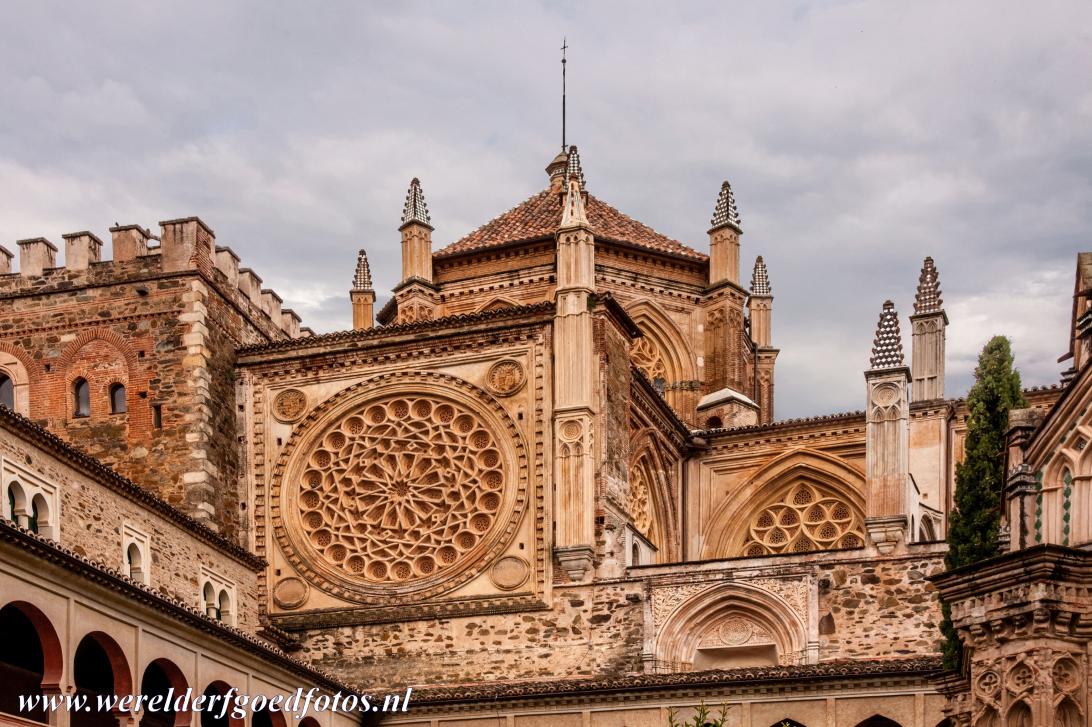
The Royal Monastery of Santa Maria de Guadalupe is a masterpiece of the Gothic, Renaissance, Mudéjar, Baroque and Neoclassical styles. The Monastery of Guadalupe was built between the 14th and 18th centuries. The Monastery of Santa Maria de Guadalupe houses the statue of Our Lady of Guadalupe, a symbol of the Christianization of the New World. The Royal Monastery of Santa Maria de Guadalupe the gained status as a UNESCO World Heritage in 1993.

The Royal Monastery of Santa Maria de Guadalupe is a masterpiece of the Gothic, Renaissance, Mudéjar, Baroque and Neoclassical styles. The Monastery of Guadalupe was built between the 14th and 18th centuries. The Monastery of Santa Maria de Guadalupe houses the statue of Our Lady of Guadalupe, a symbol of the Christianization of the New World. The Royal Monastery of Santa Maria de Guadalupe the gained status as a UNESCO World Heritage in 1993.
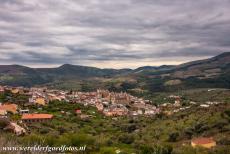
The Royal Monastery of Santa Maria de Guadalupe is situated in Guadalupe, a historic village in the foothills of the Sierra de Altamira, Spain. The monastery symbolizes two major events in the history of Spain: The end of the Reconquista of the Iberian Peninsula in 1492 and the arrival of the explorer and seafarer Christopher Columbus in the Americas in 1492. The Royal Monastery of Santa Maria de Guadalupe was inscribed on the UNESCO World Heritage List in 1993.
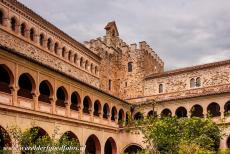
The courtyard and Mudéjar cloister of the Royal Monastery of Santa Maria de Guadalupe. The Royal Monastery of Santa Maria de Guadalupe was built on the site where a statue of the Virgin Mary was found on the banks of the Guadalupe River in Spain. The statue was named Our Lady of Guadalupe and is enshrined in a chapel of the monastery, the Camarín de la Virgen, the small chapel also houses the numerous expensive dresses of the statue.
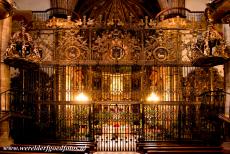
The statue of Our Lady of Guadalupe is enshrined in the Camarín de la Virgen, the chapel above the High Altar in the church of the Royal Monastery of Santa Maria de Guadalupe. A monk guide visitors to the Camarín de la Virgen, the Chamber of the Virgin, with the statue of Our Lady of Guadalupe, here visitors can also admire her numerous lavishly embroidered robes. The statue Our Lady of Guadalupe is one of the three Black Madonnas of Spain.
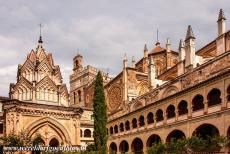
The Royal Monastery of Santa Maria de Guadalupe was the most important monastery in Spain for more than four centuries. The monastery consists of four parts, the basilica, the auditorium building, the Mudéjar cloister and the gothic cloister. The Royal Monastery of Santa Maria de Guadalupe has eight towers, the most important are the Santa Ana Tower and Portería Tower.
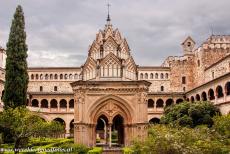
Royal Monastery of Santa Maria de Guadalupe: The Fountain House in the courtyard was built in the Plateresque style. After discovering the Americas in 1492, the famous explorer Christopher Columbus made a pilgrimage to the Monastery of Santa Maria de Guadalupe to give thanks for a safe voyage. The Royal Monastery of Santa Maria de Guadalupe never lost its importance and is one of the most important Christian pilgrimage sites in Spain since the 14th century.
